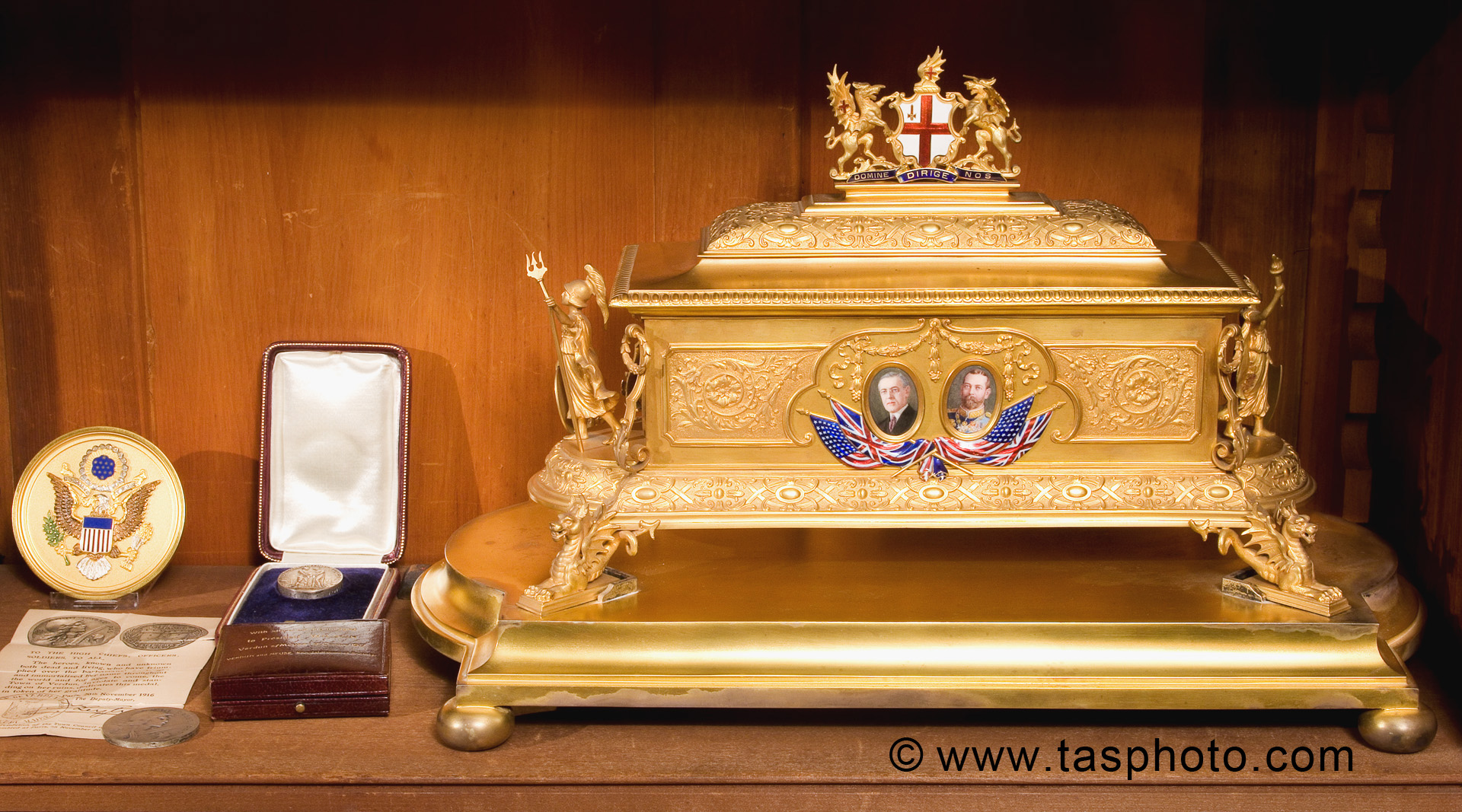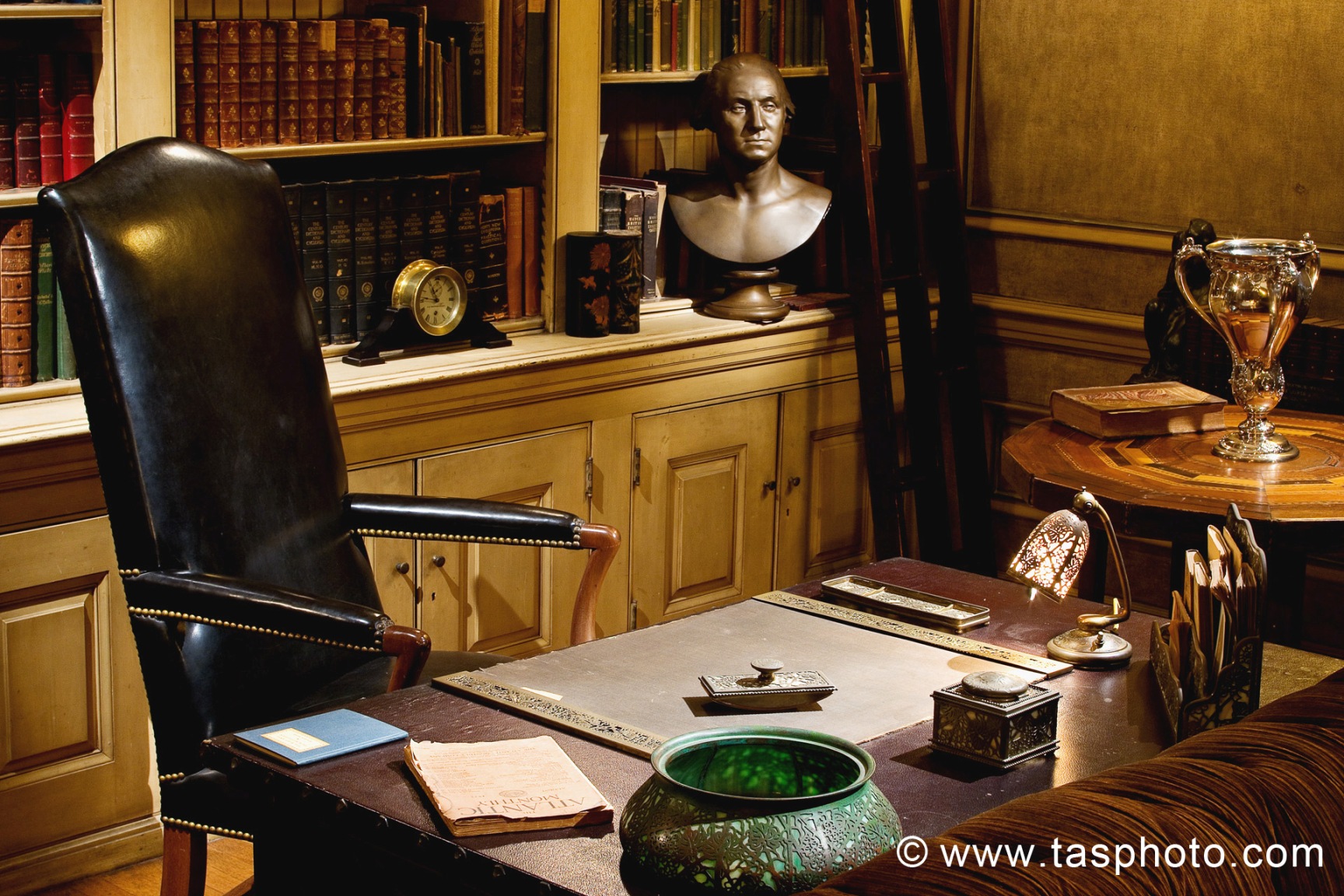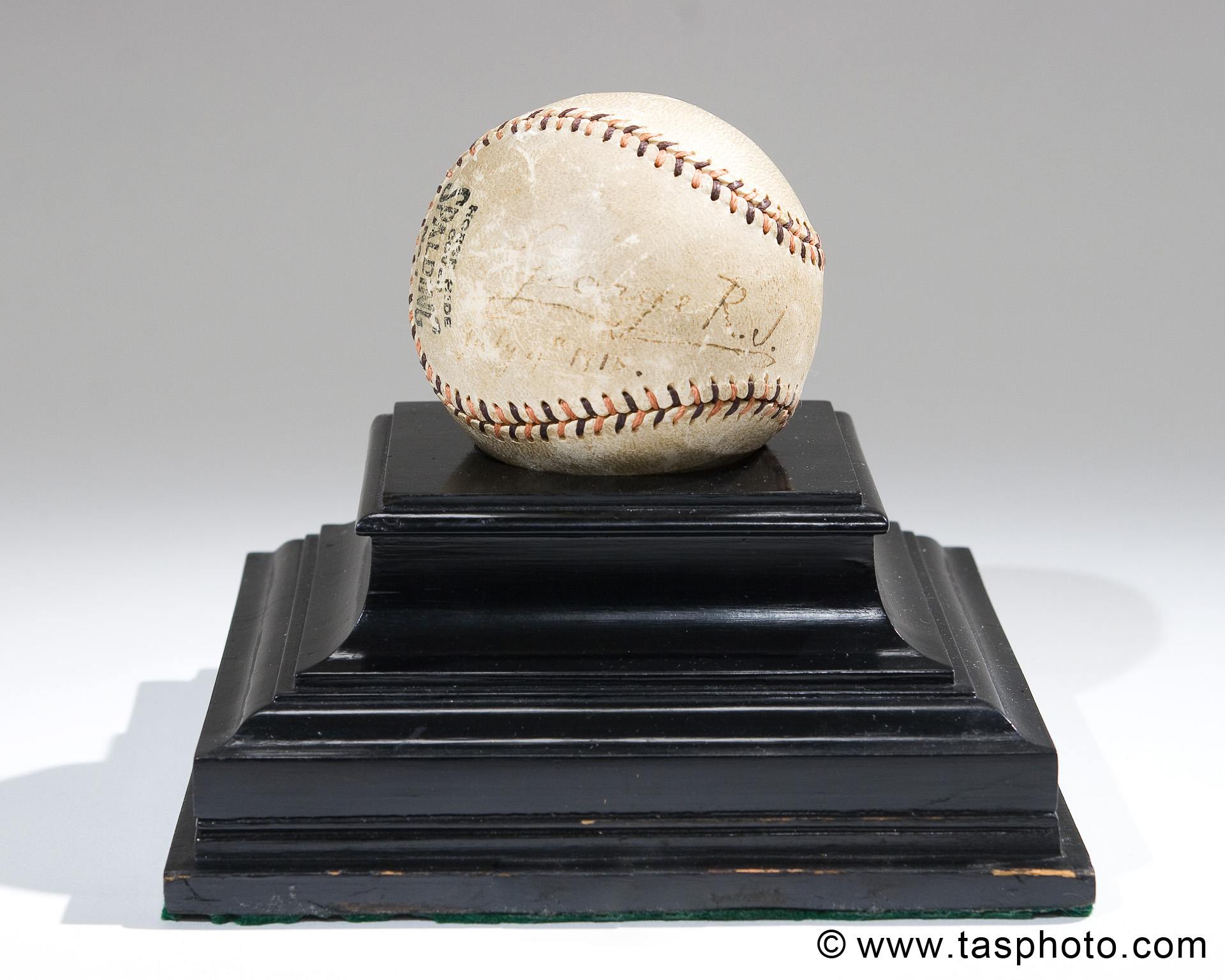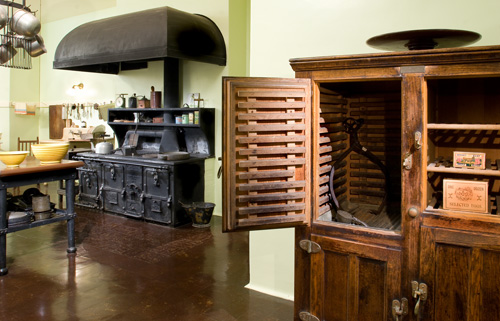Gobelins Tapestry, which hangs on the eastern wall of the
drawing room, is one of the largest and most intricate pieces in our collection. The Wilsons adored this tapestry, but they
had no idea what they were in for when they received it.
In 1917, the French ambassador to the United States Jean
Jules Jusserand requested a meeting with the Wilsons to present a “small piece
of Gobelin tapestry.” Mrs. Wilson was
shocked upon its delivery to the White House, to find that this “small piece”
of tapestry unfolded to be a masterpiece of 18.5 feet by 15 feet! Taken aback, the Wilsons insisted that the
tapestry was too valuable to be a personal gift and suggested that they would
leave it as decoration in the White House after Wilson’s term ended. However, the French government refused and
insisted that the gift was a personal one, and they would be offended if the
Wilsons refused it.
The tapestry hung in the East Room of the White House for
the remainder of Wilson’s presidency. Mrs.
Wilson chose the house on S Street as a home after the White House in part
because there is a wall large enough on which to display the tapestry. Even so, about 1/3 of the tapestry has been
folded back behind itself—the ceilings aren’t high enough!
The tapestry is called “Les Noces de Psyche,” and it depicts
the story of the marriage of Cupid and Psyche.
(If you’re not familiar with the story, it can be viewed here: http://www.pitt.edu/~dash/cupid.html). Various scenes around the tapestry feature
Jupiter and Cupid in conversation, Venus, Bacchus and his Bacchantes, Cupid’s
awakening, Psyche’s slumber, and Jupiter’s eagle. The center scene is the feast at the
wedding. Cupid and Psyche are visible in
the back of the scene sipping from the goblet of immortality.

Gobelins Factory
The tapestry was produced at the Gobelins factory, the
oldest and largest tapestry workshop in the world. Located in Paris, France, the factory still
uses methods that are over three centuries old to produce tapestries. Our records say the following about the
history of the factory:
 “Gobelins derives from the
name of a family of dyers who settled in Paris’ 13th arrondissement
in the 15th century. This
area was chosen because the River Bièvre (now dried up) was well suited for the
manufacture of dyes since its high content of waste matter, especially urine,
was a good fixative for the dyes. The
Gobelin family became wealthy, renounced their business of dyes, and were
succeeded by [the Cannaye family during the reign of Henry IV]. Skillful artists, weavers, and dyers were
imported from Flanders. Louis XIV,
following the suggestion of his Minister, Colbert, purchased the building and
gardens that were still owned by the Gobelins and established them as a royal
factory. During the reign of Louis XV,
the factory was closed for a while; workmen resumed work when Madame de
Pompadour (his mistress) wanted a certain tapestry to be made. During the French Revolution the success of
the factory declined but was revived under Napoleon.”
“Gobelins derives from the
name of a family of dyers who settled in Paris’ 13th arrondissement
in the 15th century. This
area was chosen because the River Bièvre (now dried up) was well suited for the
manufacture of dyes since its high content of waste matter, especially urine,
was a good fixative for the dyes. The
Gobelin family became wealthy, renounced their business of dyes, and were
succeeded by [the Cannaye family during the reign of Henry IV]. Skillful artists, weavers, and dyers were
imported from Flanders. Louis XIV,
following the suggestion of his Minister, Colbert, purchased the building and
gardens that were still owned by the Gobelins and established them as a royal
factory. During the reign of Louis XV,
the factory was closed for a while; workmen resumed work when Madame de
Pompadour (his mistress) wanted a certain tapestry to be made. During the French Revolution the success of
the factory declined but was revived under Napoleon.”
The
Woodrow Wilson House is proud to display such an amazing piece of artwork from
this special place that was so loved by Mr. and Mrs. Wilson.
-Kate Raber







No comments :
Post a Comment